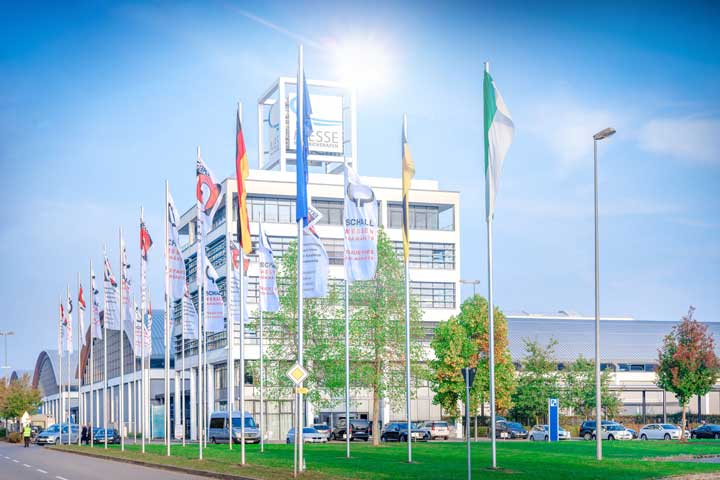Trade fair highlight 01. October 2024
clear to clear - laser welding without color additives
1 / 6

Basic sketch of laser welding clear-to-clear with long wavlengths
2 / 6

Absorption spectrum of Polypropylene with strong absorption at 1725 nm and weaker band at 1940 nm.
3 / 6

Example of laser welded micro-channel structures in clear PET without and color additives.
4 / 6

Example of radially welded balloon without collapse of lumen in the tube wall from soft clear PVC
5 / 6

Live demo at Fakuma: two laser-welded PP foils without color additives welded in different patterns.
6 / 6

By loading the video you accept YouTube's privacy policy.
Learn more
If it is not possible or not desired to add a colorant to the plastic, the usual wavelengths of 800-1100 nm of the laser can be adjusted alternatively. Especially in medical technology applications or in the food industry, this can be important to avoid an additional certification.
Advantages
- no colorant necessary
- easier certification in medical application, food, ...
Shortcomings
- process slower
- more energy necessary
- larger melt volume
- more sophisticaled process control
- more expensive laser modules
In the range of 1700-2000 nm, most polymers absorb by themselves. The absorption is only weak, so that the laser energy can also penetrate deeper into the material. The strength of absorption at different wavelengths is given by the type of polymer. Depending on the polymer and thickness of workpieces, it may therefore be advantageous to use either a wavelength of 1725 nm or 1940 nm.
At 1725 nm there is usually a stronger absorption, which is more suitable for thin materials. For thicker materials it can be advantageous to switch to 1940 nm to be able to irradiate deeper into the material.
In contrast to classical laser welding, the absorption does not only take place at the weld seam, but already starts at the surface of the upper workpiece and acts over the entire thickness. For thicker workpieces (1-2 mm), the laser beam is therefore strongly focused on the weld seam. In this way, most of the laser energy is still absorbed at the surface, but over a much larger area than at the weld seam. Melting of the plastic thus occurs primarily around the weld seam, but with much greater depth and volume than with conventional laser welding. Accordingly, more laser energy is required and the process is slower.
Advantages
- no colorant necessary
- easier certification in medical application, food, ...
Shortcomings
- process slower
- more energy necessary
- larger melt volume
- more sophisticaled process control
- more expensive laser modules
In the range of 1700-2000 nm, most polymers absorb by themselves. The absorption is only weak, so that the laser energy can also penetrate deeper into the material. The strength of absorption at different wavelengths is given by the type of polymer. Depending on the polymer and thickness of workpieces, it may therefore be advantageous to use either a wavelength of 1725 nm or 1940 nm.
At 1725 nm there is usually a stronger absorption, which is more suitable for thin materials. For thicker materials it can be advantageous to switch to 1940 nm to be able to irradiate deeper into the material.
In contrast to classical laser welding, the absorption does not only take place at the weld seam, but already starts at the surface of the upper workpiece and acts over the entire thickness. For thicker workpieces (1-2 mm), the laser beam is therefore strongly focused on the weld seam. In this way, most of the laser energy is still absorbed at the surface, but over a much larger area than at the weld seam. Melting of the plastic thus occurs primarily around the weld seam, but with much greater depth and volume than with conventional laser welding. Accordingly, more laser energy is required and the process is slower.

